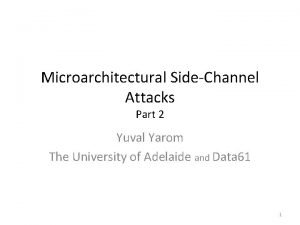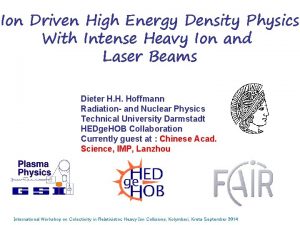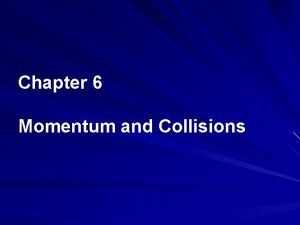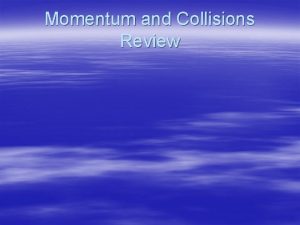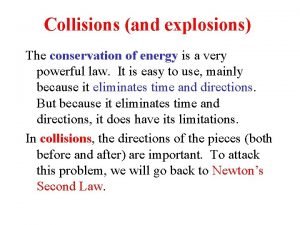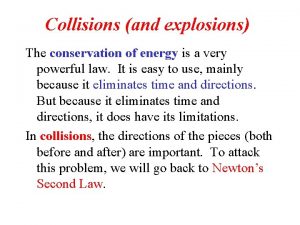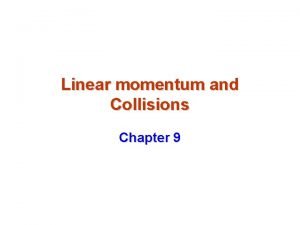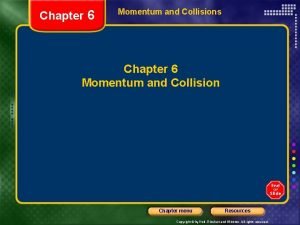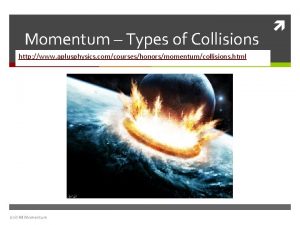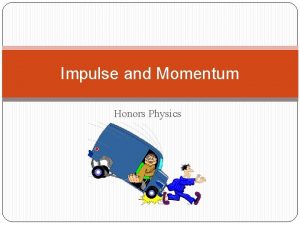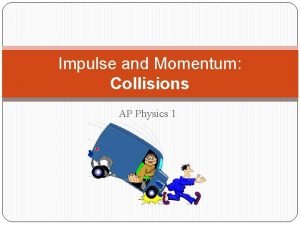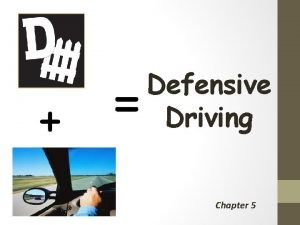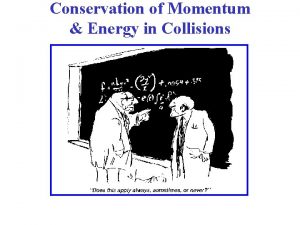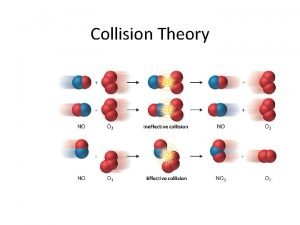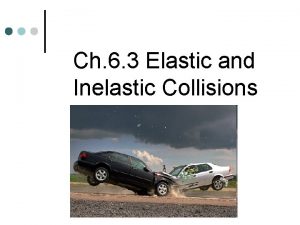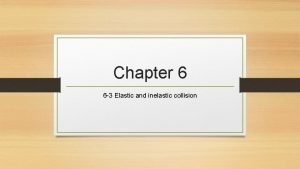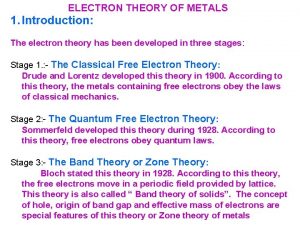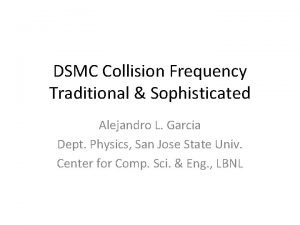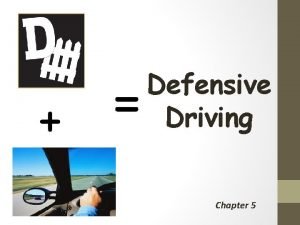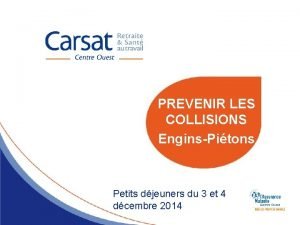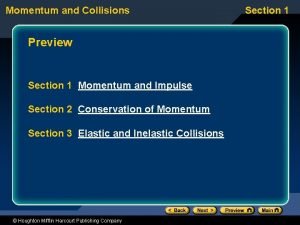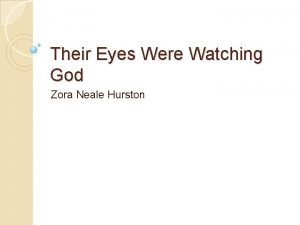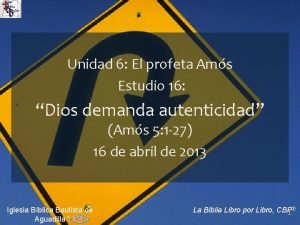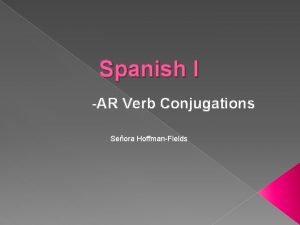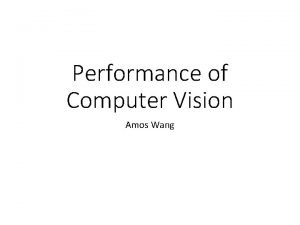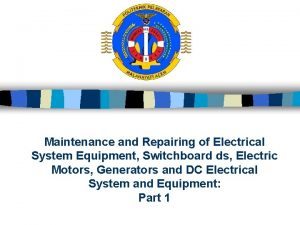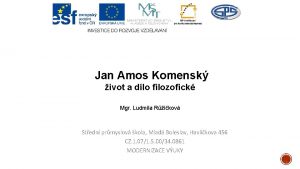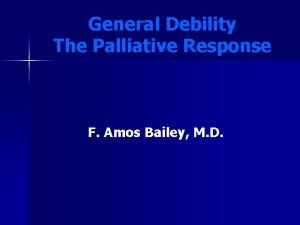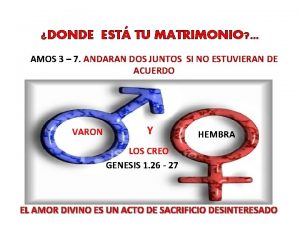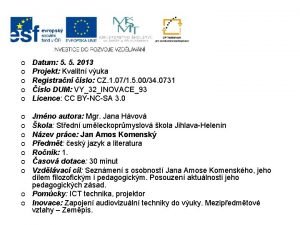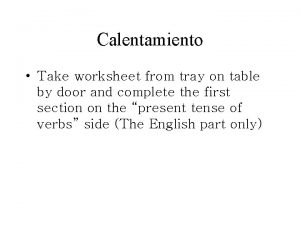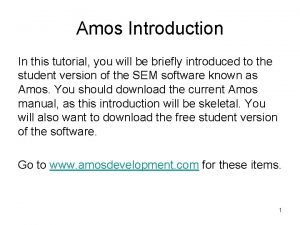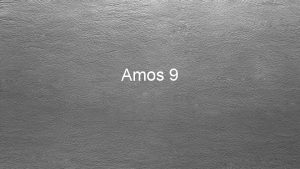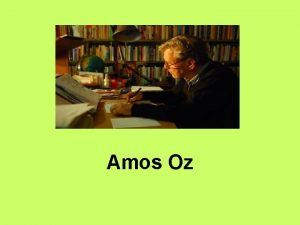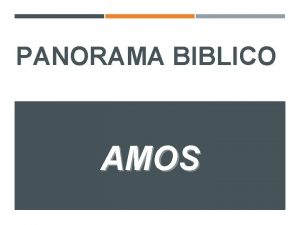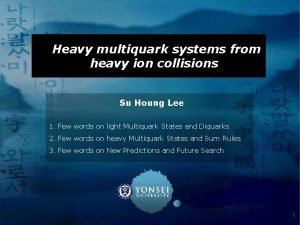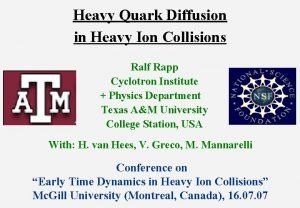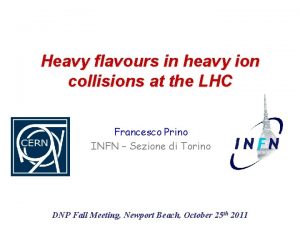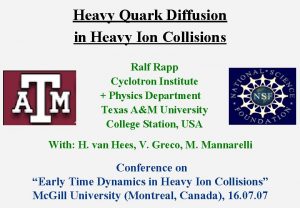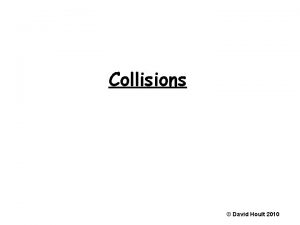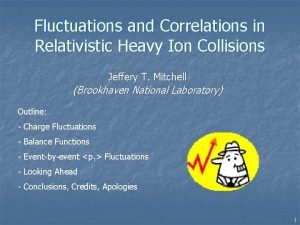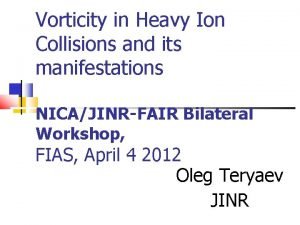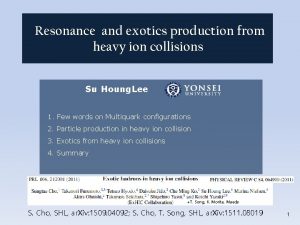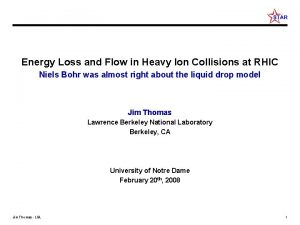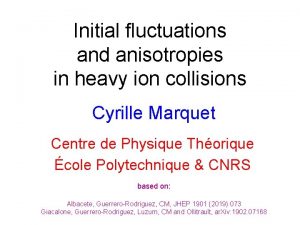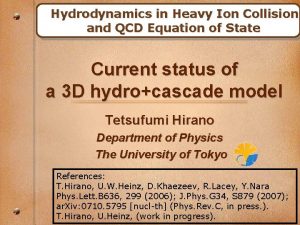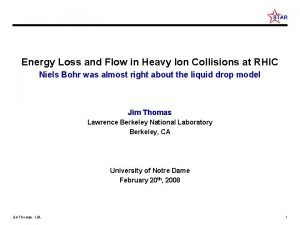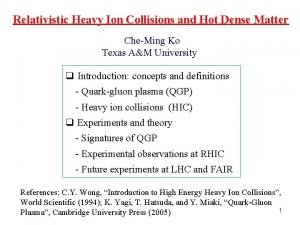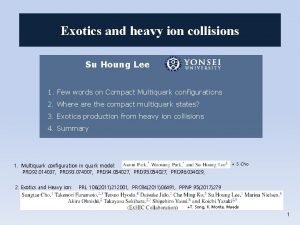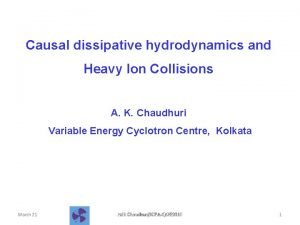Heavy ion collisions and Ad SCFT Amos Yarom











































- Slides: 43

Heavy ion collisions and Ad. S/CFT Amos Yarom With S. Gubser and S. Pufu.

Part 2: Entropy estimates

RHIC t<0 ~ 400

RHIC Imagine a gas of hadrons at the deconfienment temperature. The entropy per particle is: t>0 S/N ~ 7. 5 Thus: S ~ 37500 ~ 5000

Entropy production in Ad. S We’d like to construct a scenario similar to: S~0 S>0 Our candidate is a collision of two light-like particles which form a black hole.

Light-like particles in Ad. S 0 z=z* z

Light-like particles in Ad. S 0 z=z* z

Light-like particles in Ad. S Equations of motion for the metric: Let’s switch to light-like coordinates: Then: Stress tensor of a light-like particle.

Light-like particles in Ad. S Equations of motion for the metric: Let’s switch to light-like coordinates: Then: We use an ansatz:

Light-like particles in Ad. S The equations of motion for the metric: with the ansatz: reduce to:

Light-like particles in Ad. S The solution to: is: where:

Light-like particles in Ad. S 0 z=z* z

Light-like particles in Ad. S 0 z=z* z

Light-like particles in Ad. S z=z* t The line element we wrote down is a solution anywhere outside the future light-cone of the collision point. t=0 x 3 x 1, x 2

Horizons Event horizon: boundary of causal curves reaching future null infinity. Marginally trapped surface: ~ a 3 dimensional surface for which the outward pointing null vector propagates neither inward nor outward and the other propagates inward. be the null normal vectors to the surface. Let: and Then, a marginally trapped surface satisfies:

Horizons A trapped surface is always on or inside an event horizon. The area of the event horizon can only increase The entropy of a black hole is proportional to its area Goal: Find a marginally trapped surface, compute its area, and obtain a lower bound on the entropy of the black hole.

Searching for a trapped surface: Guess: t I II t=0 x 3 x 1, x 2 We find y by requiring that the expansion vanishes on this surface.

Searching for a trapped surface: Guess: I II We find y by requiring that the expansion vanishes on this surface. A normal to the surface is given by: The metric is singular at u=0 and ! v<0. In order for the metric to be finite we use the coordinate transformation: Requiring that it’s light-like, outward pointing and future directing,

Searching for a trapped surface: Guess: I II We find y by requiring that the expansion vanishes on this surface. A normal to the surface is given by: The inward pointing null vector is given by:

Searching for a trapped surface: Guess: I II We find y by requiring that the expansion vanishes on this surface. The normals to the surface are given by: From symmetry:

Searching for a trapped surface: Guess: I II The normal to the surface is: The induced metric should be orthogonal to the normals. To find it, we make the guess: and determine A, B and C though:

Searching for a trapped surface: Guess: I II With and we can compute the expansion: After some work, we find (using With the boundary conditions: ):

Searching for a trapped surface: We need to solve: With the boundary conditions: The most general, non-singular, solution to the differential equation is: We denote the boundary by the surface q=qc. Then, the boundary conditions turn into algebraic relations between qc and K:

Searching for a trapped surface: We found a trapped surface: I II Where: with

Horizons A trapped surface is always on or inside an event horizon. The area of the event horizon can only increase The entropy of a black hole is proportional to its area Goal: Find a marginally trapped surface, compute its area, and obtain a lower bound on the entropy of the black hole.

Searching for a trapped surface: We found a trapped surface: I II Where: with The area is given by:

Searching for a trapped surface: We found a trapped surface: I II Its area is: The lower bound on the entropy is:

Converting to boundary quantities Let’s see what the collision looks like on the boundary. Recall that: So from:

Converting to boundary quantities Let’s see what the collision looks like on the boundary. Recall that: From the form of the metric we find: So we convert: E=Ebeam=19. 7 Te. V z*=4. 3 fm

Converting to boundary quantities We convert: E = Ebeam = 19. 7 Te. V Naively: Recall z* = 4. 3 fm But more generally:

Converting to boundary quantities We convert: E = Ebeam = 19. 7 Te. V Naively: Compare: z* = 4. 3 fm But more generally:

Converting to boundary quantities We convert: E = Ebeam = 19. 7 Te. V So that: z* = 4. 3 fm

Results (PHOBOS, 2003) LHC X 1. 6

Analyzing the scaling behavior 0 z

Off center collisions N b b

Off center collisions N b Npart

Off center collisions N/ Npart b Npart

Off center collisions

Off center collisions 0 z=z* b z

Results for off-center collisions

Results for off-center collisions “spectators” In a confining theory the spectators don’t participate in the collisions. b For the purpose of this calculation we can “mimic” confinenemnt by setting:

Results for off-center collisions

References • • • PHOBOS collaboration nucl-ex/0410022. Multiplicity data. Aichelburg and Sexl. Gen. Rel. Grav. 2 (1972) 303 -312 Shock wave geometries in flat space. Hotta et. al. Class. Quant. Grav. 10 (1993) 307 -314, Stefsos et. al. hep-th/9408169, Podolsky et. al. gr-qc/9710049, Horowitz et. al. hep-th/9901012, Emparan hep-th/0104009, Kang et. al. hepth/0410173. Shock wave geometries in Ad. S space. Penrose, unpublished, Eardley and Giddings, gr-qc/0201034, Yoshino et. al. gr-qc/0209003 Trapped surface computation in flat space. Gubser et. al. 0805. 1551, Lin et. al 0902. 1508, Gubser et. al. 0902. 4062 Trapped surface computation in Ad. S space.
 Yuval yarom
Yuval yarom Ratey algebra 2
Ratey algebra 2 Heavy ion
Heavy ion Ejemplo de fuerza ion ion
Ejemplo de fuerza ion ion Ion dipolo
Ion dipolo Fuerzas de london
Fuerzas de london Dispersion forces
Dispersion forces Elastic vs inelastic collision
Elastic vs inelastic collision Momentum and collisions
Momentum and collisions A roller coaster climbs up a hill at 4m/s and then
A roller coaster climbs up a hill at 4m/s and then Linear momentum and collisions
Linear momentum and collisions Collisions and explosions
Collisions and explosions Collisions
Collisions What is the formula for elastic collision
What is the formula for elastic collision Chapter 6 momentum
Chapter 6 momentum Types of collision
Types of collision Impulse and momentum relationship
Impulse and momentum relationship Impulse and acceleration
Impulse and acceleration To avoid collisions a defensive driver should
To avoid collisions a defensive driver should How do we know momentum is conserved
How do we know momentum is conserved Necessary for successful collisions to occur
Necessary for successful collisions to occur Inelastic collision examples real world
Inelastic collision examples real world Types of collision
Types of collision Is momentum conserved in all collisions
Is momentum conserved in all collisions Expressways have expressway entrance
Expressways have expressway entrance Drawbacks of free electron theory
Drawbacks of free electron theory Collision frequency formula
Collision frequency formula To avoid collisions a defensive driver should
To avoid collisions a defensive driver should Prévention des collisions engins-piétons
Prévention des collisions engins-piétons Collisions
Collisions What is janie and joe's first impression of the town
What is janie and joe's first impression of the town Busca lo bueno y no lo malo para que vivais
Busca lo bueno y no lo malo para que vivais O as a amos an chart
O as a amos an chart Amos wang
Amos wang Amos pms system
Amos pms system Jan amos
Jan amos Bailey amos
Bailey amos Amós 3 3 matrimonios
Amós 3 3 matrimonios Jan amos
Jan amos Amos 8 11-12
Amos 8 11-12 O as a amos an
O as a amos an Amos paran
Amos paran Amos tutorial
Amos tutorial Amos 9:3
Amos 9:3
